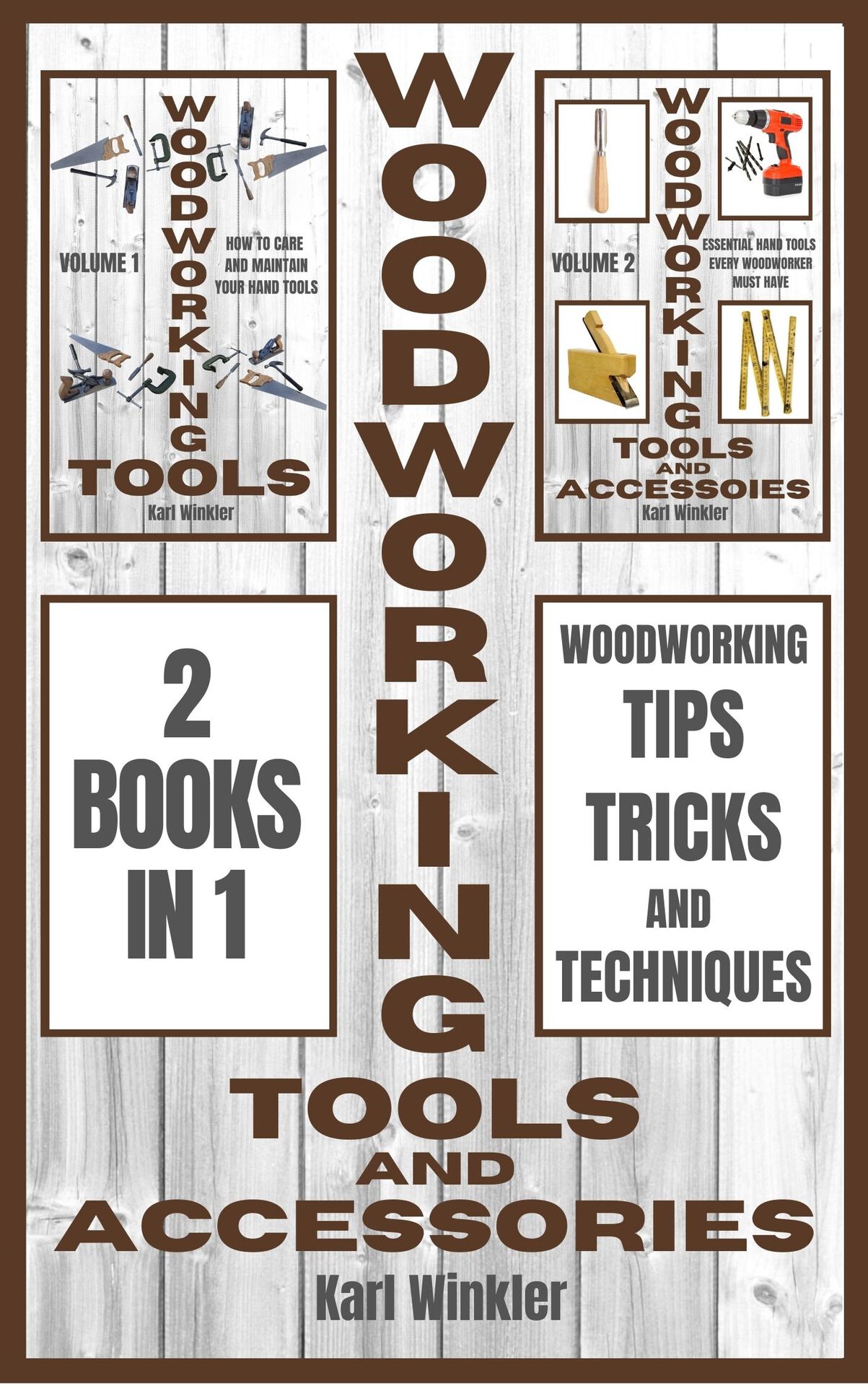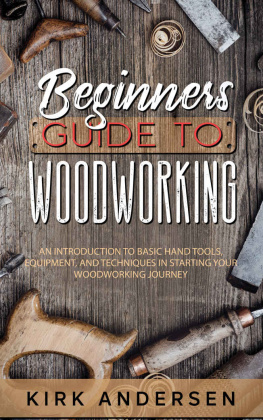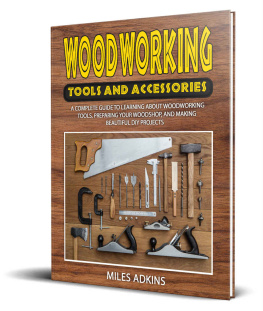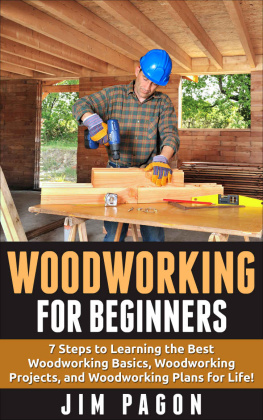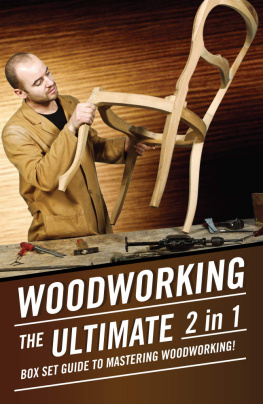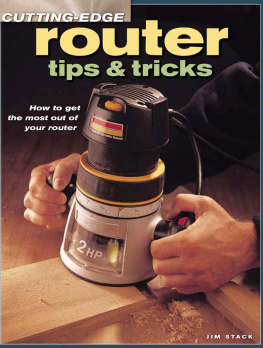Woodworking Tools and Accessories
2 books in 1
Woodworking Tips, Tricks and Techniques
BOOK 1
How to Care and Maintain Your Hand Tools
&
BOOK 2
Essential Hand Tools Every Woodworker Must Have
Karl Winkler
Copyright
All rights reserved.
No part of this book may be reproduced in any form or by any electronic, print or mechanical means, including information storage and retrieval systems, without permission in writing from the publisher.
Copyright 2020 Karl Winkler
Disclaimer
Purchasing this book can be seen as consent to the fact that both the publisher and the author of this book are in no way experts on the topics discussed within. This book is developed with the goal of providing information that is as accurate and reliable as possible. Under no circumstances will any legal responsibility or blame be held against the publisher for any reparation, damages, or monetary loss due to the information herein, either directly or indirectly. This declaration is deemed fair and valid by both the American Bar Association and the Committee of Publishers Association and is legally binding throughout the United States. There are no scenarios in which the publisher or the original author of this work can be in any fashion deemed liable for any hardship or damages that may befall the reader or anyone else after undertaking information described herein. The information in the following pages is intended only for informational functions. As befitting its nature, it is presented without assurance regarding its prolonged validity or interim quality. Trademarks that are mentioned are done without written consent and can in no way be considered an endorsement from the trademark holder.
Table of Contents Book 1
Table of Contents Book 2
Book 1
Woodworking Tools
How to care and maintain your hand tools
Karl Winkler
Introduction
Take the first step and dive into woodworking!
If you are new to working with wood, you may be wondering where to start. Hence, its always a good idea to start with a few hand tools, such as a couple of planes, a set of chisels, some layout tools, and a handsaw. Using hand tools requires tolerance and a degree of skill, but in the process, youll learn all about grain direction, accurate layout, and the importance of sharp tools. Learning to use power tools can be equally satisfying; woodworking machines provide accuracy and efficiency thats difficult to match with hand tools. The table saw is the first power tool that many woodworkers purchase. It can accurately rip and crosscut as well as cut many joints. The jointer and planer are a team that can efficiently flatten and plane lumber to size. Almost every woodworking shop has a band saw; its the tool of choice for cutting curves and the only tool that can resaw book-matched panels and veneer. Mostly, power and hand tools are of equal importance: Machines provide efficiency for labour-intensive tasks, such as sawing and planing; hand tools are used to create fine details that machines cant duplicate. As you peruse the pages of this book, I hope that youll learn many new skills while experiencing the intense enjoyment that woodworking provides. You will learn about power tool safety tips when working with wood, and how to look after your tools.
In book 1, we will begin with a little introduction to sharpening tools, cutting edge basics, how to use Benchstones and how to use bench grinders. Next, we are going to look at different ways to maintain hand tools such as handsaws, chisels, gouges, bench planes and scrapers. Next, we are going to cover how to maintain roughing and shaping tools, how to take care of braces and bits, how to sharpen power tool blades, router bits and shaper cutters. After that, you will learn how to maintain circular saw blades, band saw blades, jointer and planer knives and how to maintain portable power tools. Moving on, you will learn how to repair portable power tools, how to maintain stationary power tools, how to use table saws, radial arm saws, and band saws. Next, we will cover how to use jointers and planers, how to use drill presses, lathes and shapers and what other supplementary tools you need for your workshop.
Book 2 begins with the fundamentals of hand tools such as Combination square, Marking knife or Bevel gauge. Moving on, it covers Joinery tools such as Dovetail saw, Chisels, Coping saw and Shoulder plane. After that, you will learn about Tools for shaping and smoothing such as Block plane, Card scraper, Spokeshave or Smoothing plane. Next, you will learn about Essential handsaws such as Dovetail saw, Crosscut saw, Dozuki, Coping saw and Backsaw. Moving on, you will comprehend Essential handplanes such as Bench plane, Adjustable block plane, Jointer, Shoulder plane, Smoothing plane or a Small router plane. After that, you will learn proven Tips for handplaning such as How to adjust the blade, how to install the blade correctly or how to plane correctly. Next, you will learn how to use the Card Scraper and scraper planes or how to use Japanese chisels such as Mentori, Kinari or Shinogi. Moving on, you will learn how to use hammers and mallets and how to keep your tools sharp. Next, you will comprehend many tricks and tips about Tablesaw, Bandsaw, Miter Saw, Chopsaw, Router, Drill presses. Lastly, you will learn about Essential Measuring and Marking Tools such as Framing square, Engineers square, Marking knife, Marking gauge and Pencils. In the Bonus Chapter you will also learn about Glue-Up Gears and how to choose the Best Glues for your Woodworking project.
Power tool safety tips when working with wood
Ensure that you wear appropriate safety tools: safety glasses, a face or dust mask if you are sanding, and hearing protection if you are operating tools for an extended period of time.
Clamp all workpieces securely whenever possible to keep both hands free to operate the tool.
Be aware of the position of the power cord at all times.
Make all adjustments to a tool with the tool unplugged.
Maintain and clean tools regularly.
Keep all blades and bits sharp, clean, and undamaged.
Confirm regularly for loose parts and frayed cords.
Never carry a connected tool with your finger on the trigger.
Tie back long hair and avoid wearing loose clothing.
Eliminate rings and other jewelry that can catch accidentally in moving parts.
Do not overreach.
Keep appropriate footing and balance at all times.
Ensure that lighting and ventilation in the work area are adequate.
Do not use tools if the floor is damp or wet.
Keep your work area clean and tidy; clutter can lead to accidents.
Keep pets, children, and onlookers away from the work area.
Concentrate on the job.
Do not rush or take shortcuts.
Never work if you are tired, stressed or have been drinking alcohol or utilizing any medication that induces drowsiness.
Chapter 1 How to look after your tools
When I come upon a craftsman who built fine country furniture, miles from the nearest power line, I was inspired to learn as much as I could about how to make tools work well. As a result, wood became a much more welcoming material to me. Today, as an experienced teacher of woodworking to children, my job is to help my apprentices escalate the possibilities of wood. The last thing I want to do is let them work with bum tools. It is easy to fall in love with hand tools. I have a small collection of time-mellowed implements that I would not think of putting to work. They represent a history of effort and issue-solving that is a comfort to my modern mind". I also have other fine old tools that are often put into service. But the tools I use every day in teaching have much less of an aura about them. Kids bang them around and drop than all too often. What is vital about them is that they work right. The difference between a dull tool and a sharp one is something every woodworker needs to know. It is the difference between the upset kid I was and the kids I teach today. When I show a child how to whittle, he or she is expected to try every knife on the rack, typically four or five tools. Only by making this comparison will it become clear which are really sharp and which are just okay. Every woodworker has his or her own favoured way to sharpen an edge tool. Some use oil stones, slow sandstone wheels, Arkansas stones or leather strops. Others favour Japanese water stones, the use of which is almost a ritual. In my school shop, I need to work rapidly and I have long since settled on a grinding belt and buffing wheel. At home, I have fallen in love with the new technology of diamond stones. I firmly believe that, while sharp tools are essential, there is no one right way to sharpen tools, only the best way for you. It takes time to figure it out, but it is time you must be willing to spend. It is like building the foundation of your home. Each item else rests on it.

